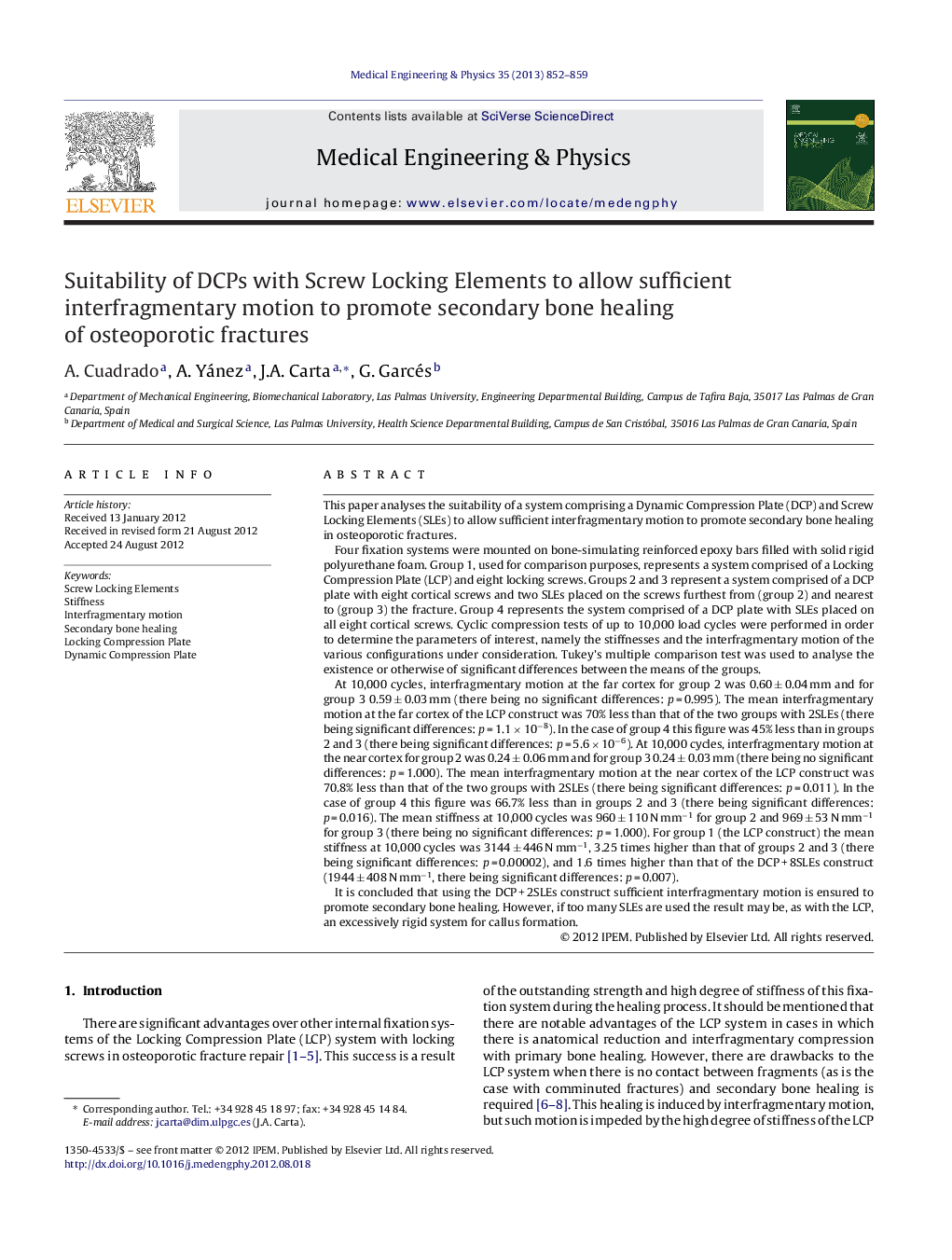| Article ID | Journal | Published Year | Pages | File Type |
|---|---|---|---|---|
| 876315 | Medical Engineering & Physics | 2013 | 8 Pages |
This paper analyses the suitability of a system comprising a Dynamic Compression Plate (DCP) and Screw Locking Elements (SLEs) to allow sufficient interfragmentary motion to promote secondary bone healing in osteoporotic fractures.Four fixation systems were mounted on bone-simulating reinforced epoxy bars filled with solid rigid polyurethane foam. Group 1, used for comparison purposes, represents a system comprised of a Locking Compression Plate (LCP) and eight locking screws. Groups 2 and 3 represent a system comprised of a DCP plate with eight cortical screws and two SLEs placed on the screws furthest from (group 2) and nearest to (group 3) the fracture. Group 4 represents the system comprised of a DCP plate with SLEs placed on all eight cortical screws. Cyclic compression tests of up to 10,000 load cycles were performed in order to determine the parameters of interest, namely the stiffnesses and the interfragmentary motion of the various configurations under consideration. Tukey's multiple comparison test was used to analyse the existence or otherwise of significant differences between the means of the groups.At 10,000 cycles, interfragmentary motion at the far cortex for group 2 was 0.60 ± 0.04 mm and for group 3 0.59 ± 0.03 mm (there being no significant differences: p = 0.995). The mean interfragmentary motion at the far cortex of the LCP construct was 70% less than that of the two groups with 2SLEs (there being significant differences: p = 1.1 × 10−8). In the case of group 4 this figure was 45% less than in groups 2 and 3 (there being significant differences: p = 5.6 × 10−6). At 10,000 cycles, interfragmentary motion at the near cortex for group 2 was 0.24 ± 0.06 mm and for group 3 0.24 ± 0.03 mm (there being no significant differences: p = 1.000). The mean interfragmentary motion at the near cortex of the LCP construct was 70.8% less than that of the two groups with 2SLEs (there being significant differences: p = 0.011). In the case of group 4 this figure was 66.7% less than in groups 2 and 3 (there being significant differences: p = 0.016). The mean stiffness at 10,000 cycles was 960 ± 110 N mm−1 for group 2 and 969 ± 53 N mm−1 for group 3 (there being no significant differences: p = 1.000). For group 1 (the LCP construct) the mean stiffness at 10,000 cycles was 3144 ± 446 N mm−1, 3.25 times higher than that of groups 2 and 3 (there being significant differences: p = 0.00002), and 1.6 times higher than that of the DCP + 8SLEs construct (1944 ± 408 N mm−1, there being significant differences: p = 0.007).It is concluded that using the DCP + 2SLEs construct sufficient interfragmentary motion is ensured to promote secondary bone healing. However, if too many SLEs are used the result may be, as with the LCP, an excessively rigid system for callus formation.
